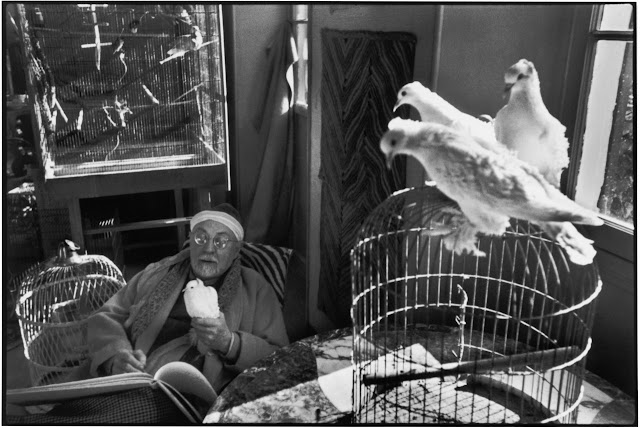In the Studio is a series dedicated to the photographic documentation of artists within their workspaces. Over more than seven decades Magnum’s member photographers have captured images of the inner sanctums of many artists, often forging long-standing working or creative partnerships with them in the process. The images made in the studios of artists, in the company of their creatively imposing occupiers, reveal everything from insights on techniques and fabrication processes to illuminating clutter, reassuringly normal mess, and hints at the personal lives of individuals beyond their well known artistic output.
During 1944 Cartier-Bresson visited Matisse’s villa at Le Rêve, in the Alpes Maritimes region of the country, several times. The artist he met was by that time in his 60s and mostly chair and bed-bound, following a major surgery three years previously. Though his physical restriction was frustrating, for Cartier-Bresson, his art was always designed to soothe an aching body or mind – as Matisse explained: “What I dream of is an art of balance, of purity and serenity devoid of troubling or depressing subject matter – a soothing, calming influence on the mind, rather like a good armchair which provides relaxation from physical fatigue.”



Comments
Post a Comment